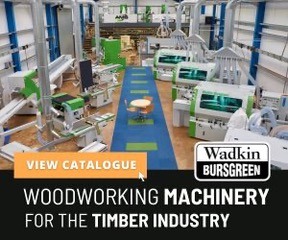In such a fast-paced world, homeowners and architects have come to expect quick turn arounds on projects – not only do they want their projects done ahead of schedule, but they also expect you, as a manufacturer, to respond quickly to their changes and demands for mass customisation. According to Daniel Mesecke, account manager for Microvellum, many manufacturers rely on several different design and manufacturing software applications. For some, it can be difficult to keep up with change requests and remain profitable.
“I speak with a lot of manufacturers that depend on multiple steps to complete a project, utilising several different software applications and processes,” says Daniel. “This may involve creating estimates in one software, drawing projects in CAD software such as AutoCAD, engineering products in a separate cabinet or modeling software, creating CNC machine programs in yet another disconnected CAM program and relying on other software or manual processes to fill in the gaps before products can make their way into assembly.
“For some, this system may work, but most will admit they don’t have the power to accelerate the way they need to grow their company.”
Microvellum specialises in helping woodworkers streamline the way they work with one solution. Users of Microvellum’s AutoCAD-based software rely on one platform for the entire design to manufacturing process. All project data is stored in one central database that can be accessed for estimating, design, drafting, engineering, production data and reporting.
“Imagine a solution where your team is all working from the same data,” continues Daniel. “Your drafting team is using the products that your estimators configured and included in their bid – the same ones your engineers built for mass customisation. Now, imagine being able to advance the projects to your factory for production from one application. This is what you get with a Microvellum solution.
“And when that inevitable request to change one or more a product sizes or configurations comes, imagine having a platform where all your changes are kept in sync automatically – 2D drawings and sections required for architects or homeowner approval are updated, 3D models are modified so you can visually verify that your modifications are what your client expected, machine tool paths have been adjusted and all other data needed for reporting and production is updated. All you need to do is reprocess the project.
“Now, think about what would need to happen to make those same modifications when you use three, four, or possibly five separate applications.”
Microvellum’s platform combines the power of AutoCAD® and the flexibility of Excel® – enabling users of the system to have complete control over the parametric intelligence built into every product – features such as 2D drawings and sections, 3D models, construction options, machining, hardware and warning messages. Users can make use of the extensive cabinet, wardrobe, fixtures, toilet partition and office furniture libraries as is or choose to customise or build their own unique products.
“I like to tell people that, remaining profitable is about lowering risk,” concludes Daniel. “When you align your team behind one platform that has the power to streamline the way your team works, you remove friction, lower risk and increase your profits.”
To learn more about Microvellum or to request a free assessment of your design to manufacturing workflows, visit www.Microvellum.com.








